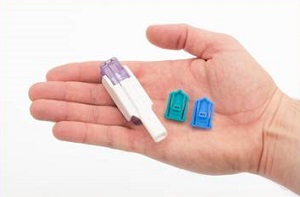
It may be haunted by the ghost of Pfizer's ($PFE) failed Exubera. It may have as many detractors as fans. But Afrezza, the inhaled insulin, now has its chance to prove its critics wrong.
Sanofi ($SNY) and MannKind ($MNKD), which developed the drug, heralded the launch of Afrezza today, as the product hit store shelves in the U.S. For MannKind, it's a vindication after years of development setbacks. For Sanofi, it's a chance to show that it can broaden its base of diabetes sales beyond the hypersuccessful Lantus.
"This delivery option may help change the dialogue" about starting insulin therapy, trial investigator Dr. Janet McGill said in a statement. MannKind executive chair Alfred Mann said he's "proud" that the long, hard R&D journey is at an end. And Sanofi's Pierre Chancel, SVP of its diabetes division, called Afrezza "an important addition to Sanofi's growing diabetes portfolio."
Sanofi made a big bet that Afrezza will overcome any lingering skepticism about replacing injectable insulin with an inhalable version. The French drugmaker ponied up $150 million in cash last year for global rights to Afrezza, and as much as $775 in milestone payments could follow. The two companies will split any profits, with 35% going to MannKind.
Sanofi is so confident that it has put a premium price on Afrezza, at more than twice the price of Apidra, its injectable counterpart in Sanofi's portfolio. Afrezza will run $7.54 per day, based on a daily dose of 12 units. As Reuters points out, Apidra costs $3.14 per day.
The idea is that many patients with diabetes resist adding insulin to their drug regimens because they're leery of injections. Sanofi's research says 39% of diabetics using oral meds avoid insulin for that very reason. An inhaler would make insulin easier for patients to accept, or so the theory goes; Sanofi's survey found that 60% of patients saw Afrezza as a preferable alternative to mealtime injections.
Many analysts are in show-me mode, however. Sales forecasts range from $182 million by 2019 (Thomson Reuters) to as much as $2 billion at peak (Morningstar), with most estimates clustered around the $600 million mark.
- read the Sanofi release
- get more from Reuters
Special Report: Top 10 best-selling diabetes drugs of 2013